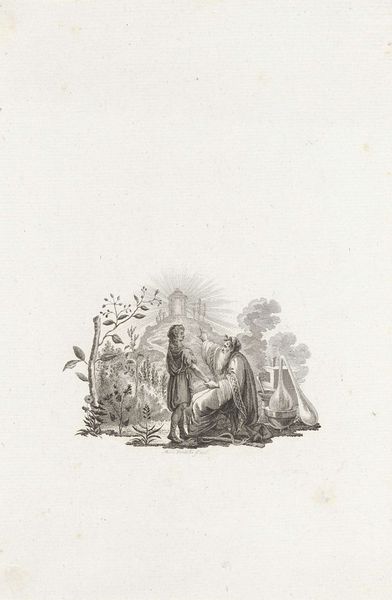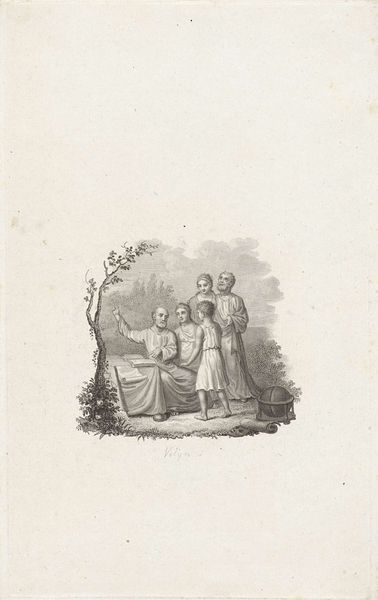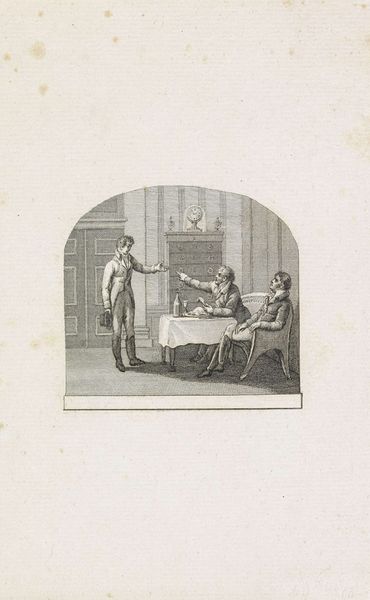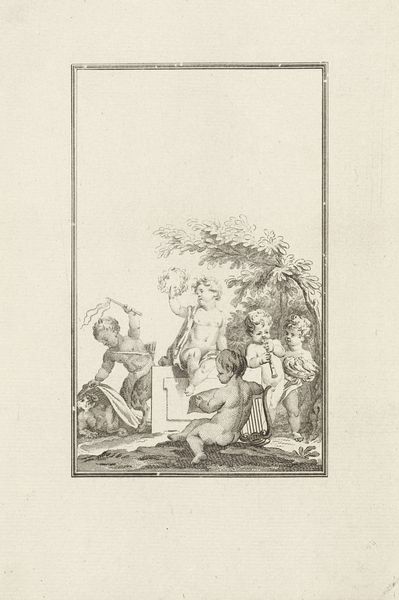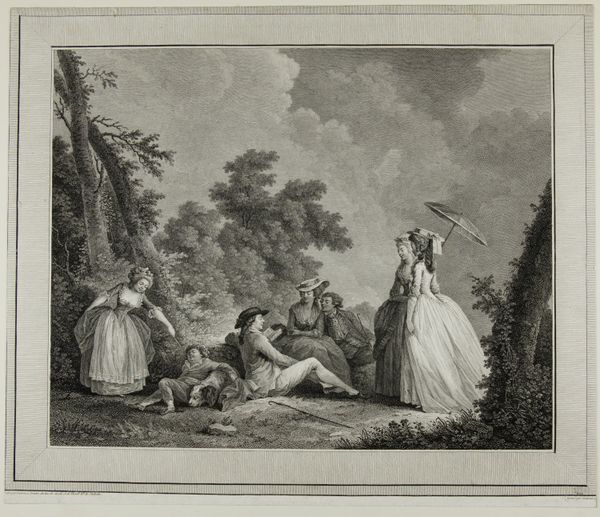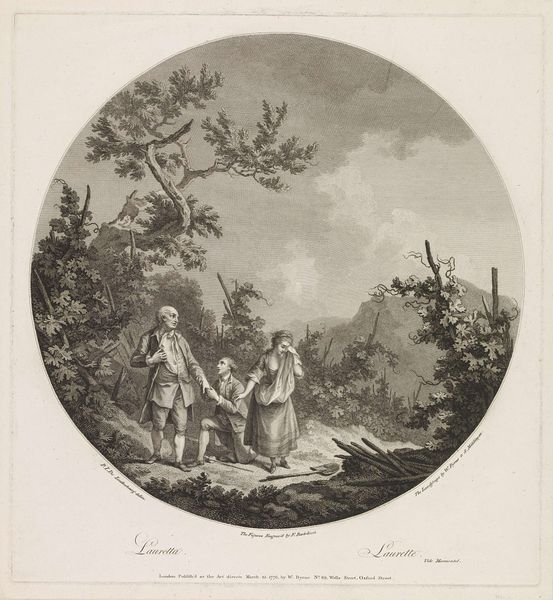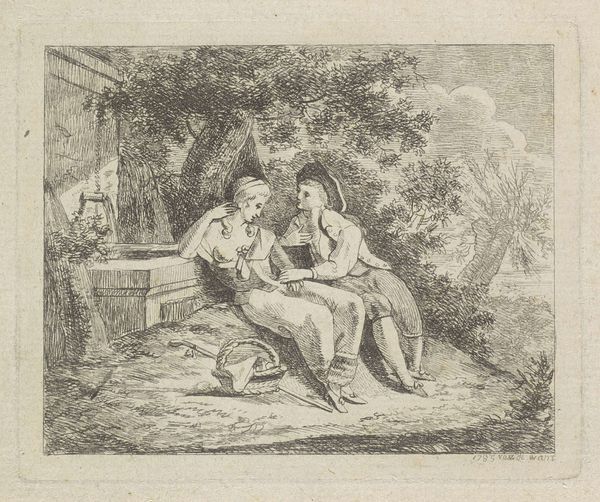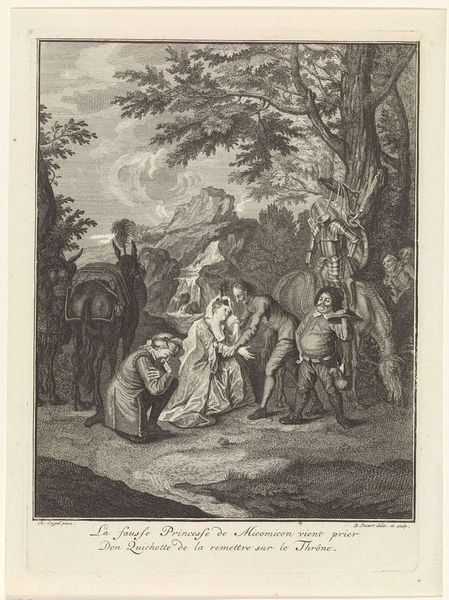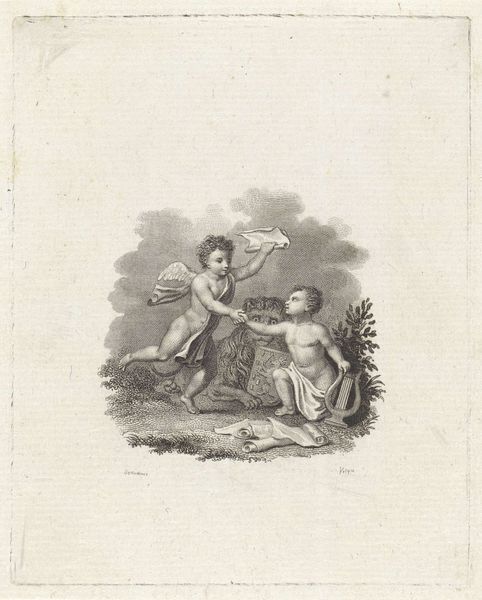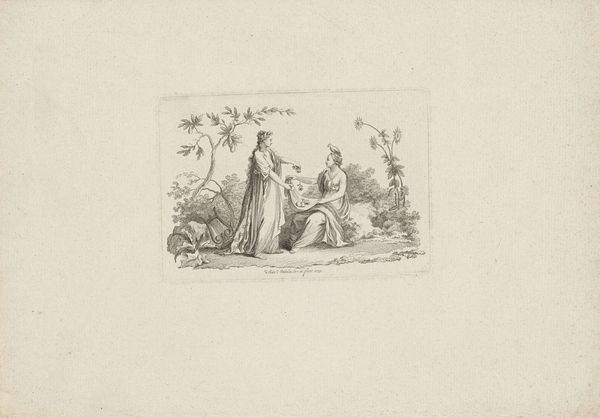
print, glass, engraving
#
table
# print
#
old engraving style
#
landscape
#
vase
#
figuration
#
glass
#
pencil drawing
#
group-portraits
#
romanticism
#
genre-painting
#
engraving
Dimensions: height 234 mm, width 150 mm
Copyright: Rijks Museum: Open Domain
Curator: This print, housed here at the Rijksmuseum, is titled *Gezelschap rond een tafel onder een boom*. It's attributed to Philippus Velijn, created sometime between 1797 and 1836. It seems to be an engraving. What are your first impressions? Editor: My immediate reaction is a kind of muted joy. The composition feels delicate, and there's a communal atmosphere depicted in the figures gathered around that table. The materials must be very important. I want to understand how the engraving brings forward that feeling in the viewers of the work. Curator: I find myself drawn to the symbolic weight of the tree providing shelter for this gathering. The tree could represent community roots and growth, while a glass vase is a fleeting moment of beauty, so their relationship suggests a social meeting in between stability and fragility. The composition certainly seems balanced. Editor: True, and it’s striking how this balance relies on very basic means, if you see the nature of an engraving and the quality of line in this one. What are the labor conditions involved in such a precise artistic practice? To render emotion like joy with limited resources available implies specific aesthetic decisions. Curator: The romantic landscape hints at that. Look at the building in the back. Perhaps the engraver is consciously situating this domestic scene in relation to a broader world with rules to adhere to. Maybe this particular piece seeks to portray everyday individuals outside our traditional icons and motifs for art, like the saints or royal families. Editor: Definitely. The focus seems to be placed on a bourgeois consumption model around 1800's. Their attire and even objects on the table suggest it. And if the material act of printing made such scenes accessible, we can assume it affected people's notions on domesticity and social relations during that era. Curator: An interesting reading. Perhaps viewers might contemplate how images shape not only cultural memory, but also contemporary aspirations. It certainly provides food for thought about how people find meaning and value in their shared experiences. Editor: It also reminds me that images also carry with them social dynamics, material restraints, and the capacity to define how people relate to a consumerist world. Understanding art, in the end, requires seeing more than aesthetics.
Comments
No comments
Be the first to comment and join the conversation on the ultimate creative platform.
